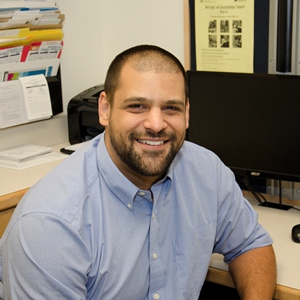In the community setting, there are a variety of practice types and styles, including: solo practices, group practices and Community Health Centres. In settings where there are multiple physicians, one physician will be paired with you as the primary preceptor at the site yet you may have the opportunity to work with other physicians. All of our primary preceptors in the community hold a faculty appointment with the Department of Family Medicine, University of Ottawa.
Some primary preceptors have one resident in their practice, others two. In practices where there are two residents, it’s a combination of first and second year residents. Each resident we assign to a community practice will stay at the practice throughout their two years of residency.
In a community practice, you have a one-on-one relationship with your preceptor and are able to observe a role model whose practice setting and responsibilities can be quite different from an academic unit-based practice. In addition, you learn the business side of running a community-based practice.
Accepting residents in 2025 are marked bold with an "x". | Please select preceptor below for site description:
Community Urban
- x Manotick Medical Centre
Dr. Jeremy Gardner and Dr. Victor Sandu - x Brightside Medical Clinic
Drs. Jason Leclair, Andrew Kujavsky, Michael Ducey - x Panorama Medical Clinic
Dr. Anwar Abu-Dieh - x Gloucester Family Health Centre (Ottawa)
Dr. Veera Mirdavoudi - x The Nation River Health Clinic (Winchester)
Dr. Teisha Legault - x Restore Medical Clinic (Ottawa)
Dr. Danielle Brown-Shreves - x Kemptville Medical Centre (Kemptville)
Dr. Mira Malek - x West Carleton MedicalCentre (Carp)
Dr. Michelle Lawler - x Greenboro Family Medicine Centre (Ottawa)
Dr. Mark Nassim - Westend Family Care Clinic (Kanata)
Dr. Qian Bian - Health Haven (Ottawa)
Dr. Jak Nehme - Rosemount Clinic (Ottawa)
Dr. Claudia Hubbes - Active Care Medical Clinic (Ottawa)
Dr. Carl Bertrand and Dr. Heather Daverne - Albion Road (Ottawa)
Dr. Christiane Kuntz - Manotick Medical Centre
Dr. Jeff Hovey and Dr. Shirin Lal - Centretown Community Health Centre (Ottawa)
Drs. Carol Geller, Lara Kent, Laura Sellers & Dr. Alison Eyre - Nepean Family Medicine Associates (Greenbank Road) (Nepean)
Dr. Hanif Charania
Community Rural
- x Renfrew Medical Group RURAL
Dr. Angela Varrin - x Renfrew Medical Group RURAL
Dr. Amanda Low and Dr. Candice Cybulskie - x Elliot Street Medical Clinic (Perth) RURAL
Dr. James Simpson and Dr. Shawn Liu - x Perth Family Medicine Clinic (Perth) RURAL
Dr. Robin Kennie

